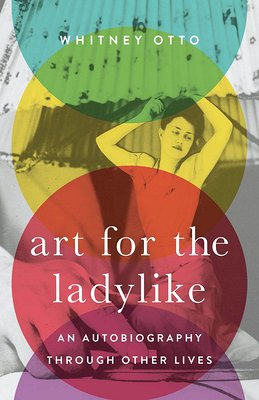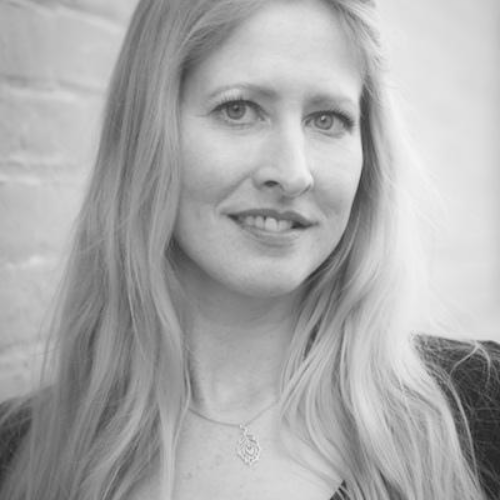Reviewed by: Angela L. Eckhart
 Often, after reading a creative nonfiction book I’m about to review, I’ll go through it a second time to reread my highlights and notes. Then I gather my thoughts until I’m ready to draft. During this stage, I sometimes read fiction in the evenings (something that won’t interfere with my review). Imagine my delight while reading a novel* that mentioned photographer Sally Mann, the first artist portrayed in Whitney Otto’s newest book, Art for the Ladylike: An Autobiography Through Other Lives (Mad Creek Books, 2021). It was like finding a friend.
Often, after reading a creative nonfiction book I’m about to review, I’ll go through it a second time to reread my highlights and notes. Then I gather my thoughts until I’m ready to draft. During this stage, I sometimes read fiction in the evenings (something that won’t interfere with my review). Imagine my delight while reading a novel* that mentioned photographer Sally Mann, the first artist portrayed in Whitney Otto’s newest book, Art for the Ladylike: An Autobiography Through Other Lives (Mad Creek Books, 2021). It was like finding a friend.
Otto’s book is part biography and part autobiography. Each of its eight essays tells the story of a prolific female photographer: Sally Mann, Imogen Cunningham, Judy Dater, Ruth Orkin, Tina Modotti, Lee Miller, Madame Yevonde, and Grete Stern. Within these essays are portrayals of other artists, such as Ansel Adams and Georgia O’Keeffe, as well as details of Otto’s own life.
While Otto delves into the lives of these pioneering women, she notices the connections she shares with them in her own life. She chose these eight women because of the impact their art had on her. Throughout her education, she had admired and appreciated many of the photographs taken by these female photographers, so much so that they piqued her interest in their lives. In writing about them, she poses questions many creative females ponder, such as how to juggle artistic work with motherhood. She also explores gender roles, feminism, and motherhood, as well as controversial issues like incest. Her insights are backed by her extensive research.
In her introduction, she quotes philosopher Michel de Montaigne, suggesting that one shouldn’t indulge in a book that’s all about the writer (which would be memoir). This book, however, isn’t just about Otto’s life. Yes, she writes about her childhood and experiences, but she does it through the lives of these other women – hence her subtitle – regardless of the time period in which they existed. These women pushed the boundaries in feminism and professionalism, but they weren’t always accepted or appreciated.
The best part of this book is learning, in detail, about each of these artists’ lives as women, professionals, and mothers. For instance, in Otto’s first essay on Sally Mann, she explores motherhood and the controversy about Mann’s work, Immediate Family, which was published in 1992. The 60 photographs in the collection portray Mann’s children playing, posed, and at rest. Some are nude, but Otto admits to not having considered Mann’s photographs inappropriate. She was reminded of when she first read Lolita, and she digresses into her own life. She concludes, “Lolita and Immediate Family are only and slightly alike in that I’ve loved and admired them for decades, though I recognize they trouble some people. Even for me there’s something shadowy and disquieting located in the novel and the photo series, but it isn’t ‘child abuse’ (the most common charge for both)….”
In the essay on Imogen Cunningham, Otto opens with the fact that Cunningham, a working photographer, had married Roi Partridge, an artist. It was interesting to learn that after Cunningham had their children, she was the one who had to put aside her art so that Partridge could leave for long periods of time to create his art. Once Cunningham returned to her art, she was offered a job with Vanity Fair in New York, but Partridge threatened divorce if she accepted it. This was in 1934; imagine a scenario like that now.
Similarly, Judy Dater was married to Jack Welpott, who was much older than she. They worked together, taking the same photographs of women, but yielding different perspectives. Dater decided it was more sexual for Welpott, but when she suggested they start taking the same photographs of men, Welpott refused. Otto noted that they divorced shortly thereafter.
Photographer Ruth Orkin began taking photographs of celebrities when she was young. Otto discovered that, “In 1939, at age seventeen, she [Orkin] hopped on her modest little bicycle and pedaled from Los Angeles to the New York World’s Fair. Alone. She made a photographic diary (300 pictures) of her four-month journey.” In 1951, Orkin’s photo, American Girl in Italy, “is arguably one of the most recognizable photographs in the United States.” She was 30 years old when she photographed the 23-year-old American art student in the picture.
Lee Miller, a professional model, became a war photographer. Otto writes, “Lee took pictures that even the men wouldn’t take….” In researching more about Miller’s life, she discovered that Miller had been raped when she was 7 years old. Following the ordeal, Miller’s father, as well as a psychiatrist, aimed to get the little girl to separate sex from love. It was the only way they knew how to help her cope with her trauma. This was probably what is now known as PTSD. After Miller’s stint photographing the worst scenes of the war, she returned to London and “lived with a kind of nervy joy…in the English countryside, with a garden, and house guests, and a baby.” Otto also suggests that Miller and her father had a unique relationship, perhaps crossing the line into incest.
Otto’s book is enlightening, obviously due to her own passion for these women and their photographs. And her book encourages the reader to be interactive: After Otto mentioned various works (paintings, photographs and other people within the essays), I had to pause reading to conduct computer searches. Although Otto describes the people and the artwork in detail, I wanted to see them for myself on the screen. She offers smart observations, and her arguments are thoughtful and reflective.
While learning about the women’s lives, however, I noticed several instances of repetition missed in editing the book. For example, in the essay about Judy Dater, page 102 quotes Dater as saying, “I feel like when Jack was doing it [taking pictures of the women], it was sexual seduction and when I was doing it, it was more of a psychological seduction to get them to co-operate with me.” Then a mere four pages later, the exact same quote was repeated.
This happens again in the essay on Orkin and Miller when talking about her father’s “academic ‘keys’, which my mother had made into a charm bracelet.” Later in the Miller essay, Otto repeats this fact: “I have a collection of keys from academic fraternities that my mother had made into a charm bracelet….”
Regardless of several recurring details, the essays all contain truths and ideas, particularly when discussing feminism, gender roles, and sexuality. Otto’s morsels of writerly and creative wisdom emanated from her own life experiences and apply to all artists. She states, “I know that as a writer there’s the thing I’m writing, and the reason I think I’m writing it, the buried reason that I’m writing it, what my life looks like at the time I’m writing it, and the reason that I’m writing it at a certain time.” Many writers can identify with that sentiment. Furthermore, she says, “All artists want to locate that telling image, that glimpse, that moment, that insight, that slip of the social mask, that core of the human experience.”
*The novel was The Woman Upstairs by Claire Messud, about an independent female artist.

Angela L. Eckhart
ReviewerAngela earned her M.A. in creative writing from Wilkes University. She’s edited two books for local authors and worked as an adjunct writing professional at her local community college for two semesters. She has completed a novel, is currently working on a memoir, and has been reviewing books for Hippocampus magazine since 2011, where she previously served as Book Reviews Editor for several years. She’s a staple volunteer at HippoCamp, and she’ll be participating in the Belize Writer’s Conference, as well as her bi-annual writing retreats.


